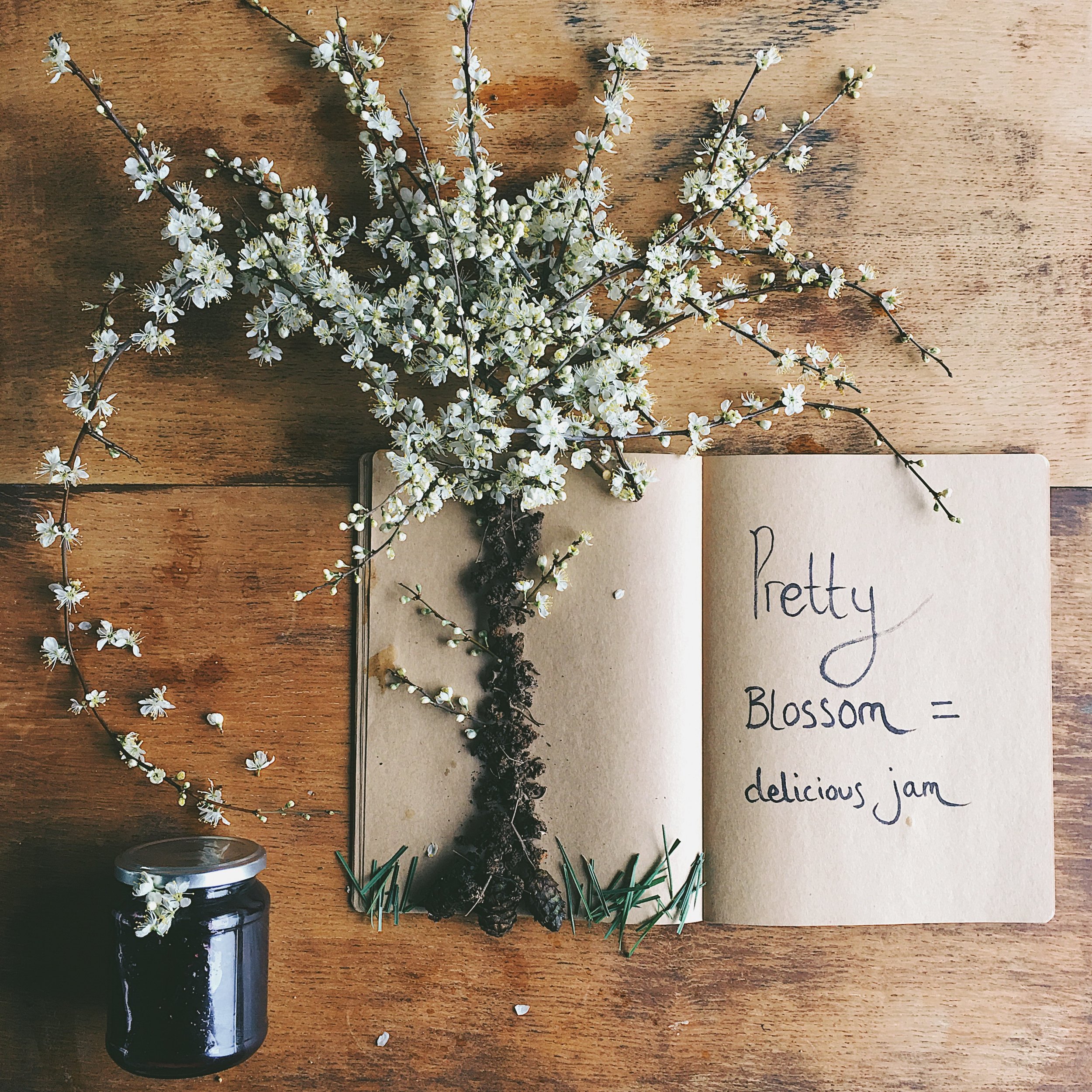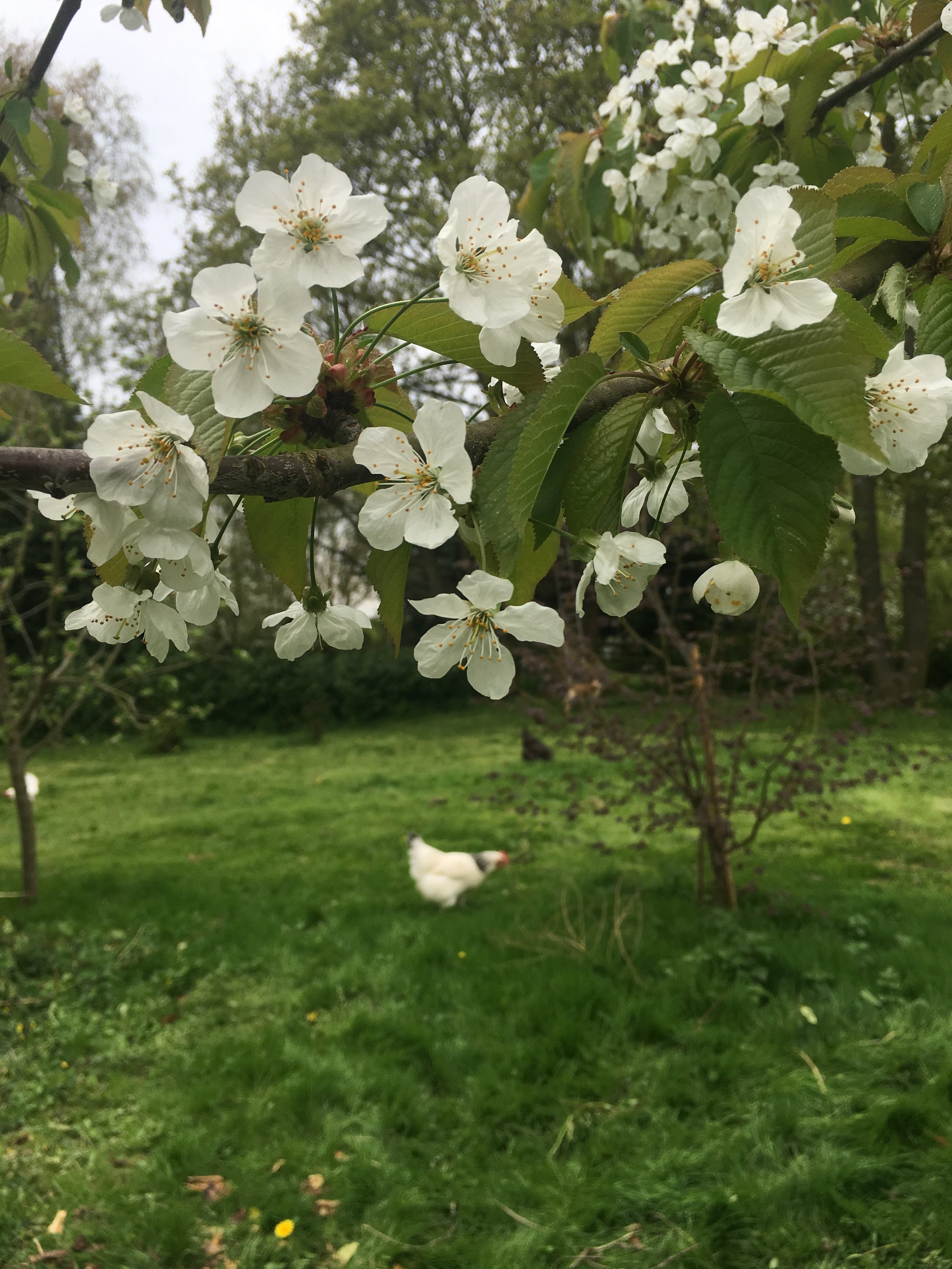May is the month of hawthorn blossom, of bluebells and the peak of the dawn chorus from our small feathered friends. It's also our anniversary month of moving to the countryside. This year it'll be six years.
We moved from a housing estate about ten minutes by car away from a large town with all the major department stores a person could need. And we were also walking distance from a much smaller town with a coffee shop, library, Boots the Chemist, doctors and small supermarket. An absolute saviour for a new mum who was brand new to the area and lonely.
Prior to this we lived in a Victorian semi in the commuter belt of London for two years and prior to that we lived in flats in London: in Leyton, Pimlico and Wapping.
With each move came the challenges associated with moving to a new area. But, it's fair to say that moving here was the biggest.
I lost a lot of confidence as a new mum. I doubted my abilities with so many things - but once we moved here I found I had no choice but to learn. And I wanted to learn. But I was so anxious and so doubtful about my own abilities. Once I did, though, once I added to my skills, I found my confidence started to grow again.
So, here are five things I can now do, which I couldn't six years ago:
1. Mow the lawn
I'm laughing as I read those three words.
Mow. The. Lawn.
I mean, it's not rocket science is it? But it's one thing plugging in a little electric flymo and cutting a tiny postage stamp lawn - to buying and using a large petrol, self-propelled lawnmower that needed filling with petrol and maintaining. (Not that I used a flymo, either.)
I'm now the proud owner of two petrol, self-propelled lawnmowers. The first we brought with us from the old house. I'd never used it. Only my husband would. It just never occurred to me that it was something I could do because you have to pull the starter lead to get the engine going. How could I, a feeble woman, pull that? Yes, I'm ashamed to admit that's probably what my subconscious thought. Or maybe it just thought I was a feeble person and being a woman didn't come into it...
Anyway...
We bought a petrol mower at the old house because we were uncomfortable with having an electrical lead near the strong cutting blade of the mower. So, even though our lawn was small we bought a Mountfield and my husband would mow when he had the time. Which was probably once every three weeks.
Then we moved to the countryside and suddenly had a lot more than a postage stamp to mow. There was no way my husband could do all of that on his own. Or with a small self-propelled Mountfield! So, I got my dad to teach me how to mow. And we invested in a sit-on mower for the field.
And I just thought my husband would be the one to use the sit-on mower. My confidence didn't let me believe I could do it. But I did.
Now, I don't think twice. I am a lawn-mowing wizz.
2. Identify trees
Six years ago I could probably identify a horse chestnut at a push. There were a few at the bottom of our old road. I knew they were horse chestnuts because we'd go and hunt for conkers. A bit of a give away, that.
But I couldn't tell an ash from a maple, or a sycamore from an elm. I didn't even know there was more than one type of willow. I certainly didn't realise that trees had flowers. I mean, obviously you see the blossom from the apple trees and other fruits. But I didn't know the horse chestnut grew flowers. Beautiful white bunches of them. Or that there was a red horse chestnut.
This is probably, out of the five things I'm listing here, the one I'm a little ashamed about. I feel that, from my late school years until six years ago, I didn't notice the seasons other than feeling the temperature. The year revolved around the school year. Then, as a career girl living in London, you only knew about the seasons if you looked up. I was too busy looking for a taxi.
3. Split wood with an axe
The ache from a hard day's work out in the garden is a virtuous ache. In the beginning before I knew my limits, when I wanted to prove I could do anything, I would split wood on a late summer/early autumn weekend with my son and my husband.
We have a number of dying elm trees in the field, one of which we pulled down with my dad, husband, brother-in-law and my nephews. When I say 'we' obviously I was filming the thing and 'directing' their movements.
The pulling down of the tree is the exciting bit. Then comes the hard work of cutting it up into smaller, manageable sizes. Wheelbarrows would dart to and fro, loppers would cut off the spindly bits that were no good for firewood, and someone would be on the axe, splitting the thick branches that had been cut into chunks about a foot long.
When the extended-family have left for their own homes, for a much needed rest I'm sure, the work chopping the branches into firewood continues.
We would rest the chunk of branch on a much larger chunk. Then the axe is raised in the air and swung downwards. My husband makes it look effortless. It's all I could do to lift the axe in the air. But I did my bit. And when the axe makes contact with the wood and you slice it into a smaller bit the satisfaction is immense.
And the warmth from the woodburner you feel on a cosy winter evening is worth all the hard work.
4. Light a fire
I don't want to be the sort of person who sits in a cold lounge at night because she can't light a fire and her husband is away.
So, I got my dad (again) to teach me how to light the woodburner. Now I'm a dab hand and can light regular fires and bonfires (although the latter still scare me a bit).
For a good fire it's all about the base, ('bout the base -no treble...) (I know, sorry, awful pun).
But it is. You cannot put a heavy oak log on top of a few glowing embers hoping it'll catch. It'll just sit there, smouldering, before going black.
You have to start with scrunched up newspaper. The Daily Mail is brilliant for lighting fires - we're given piles of them purely for our wood burner and for use with the chickens - I've tried the FT and The Times but it doesn't burn as well.
Then you lay small pieces of dry kindling onto the paper. I either use wood that has been chopped up small, like pallet wood, or twigs and wind fall from the trees that is bone dry.
Then, once that has been lit you put a few 'mediums' on top. Medium sized pieces of wood. And once that's going well you can pop a bigger piece of wood.
And there you have it.
The ash is cleared out regularly (although we keep a little in as apparently that's good for starting a fire) and given to the chickens for their dust bath. Nothing is wasted.
Incidentally I've learned a lot about wood . There are hard woods and softer woods. Some woods burn quickly and give a lovely flame like the silver birch. And some take their time - like oak and elm.
5. Plant a tree
So, are we detecting a bit of a theme here?
A lot of what I've learnt in the past few years revolves around trees and wood.
This is obviously linked quite substantially with my identification of trees in point number two. Because when I was looking to plant some trees I needed to know what I wanted to plant.
When we moved here there was a lot of field and lawn with mature trees on the left hand side as you look out the back door. The majority of the mature trees consists of sycamore, but we also have a 'tall' ash as well as a 'tall and round' ash. We have silver birches dotted along the stream as it comes towards the house and two very mature crack willows by the pond.
We also have elm trees. A couple have already come down through our own efforts. But there is also a huge one that would not be sensible for us to pull down on our own. It is pretty much dead from about three metres upwards. But, around the bottom it still has leaves and even flowers.
So here I am casually reeling off the names - but when I first moved here I didn't know what they were called. I asked the tree surgeon we were using at the time plus I've done a bit of detective work of my own.
After the first winter of moving here, when it was so cold, so bitter for weeks on end, I thought it would be a good idea to create a windbreak of trees. The chilly wind would race over the farmer's field at the bottom of ours - straight to where the chickens were living.
So I had a project. I needed to learn about trees and what I wanted to plant. In the village there are a number of mature scots pine lining the road so I wanted to have some of them. Then through further reading around trees I decided that I'd like to plant about 80% of trees that were native to the UK. And it would be a mixture of evergreen and deciduous.
This included, in addition to the scots pine, alders, crab apples, and wild cherry. Then there's the field maple and some poplars, silver birch, hazel, rowan and various willows. The native list also includes ash and elm but you can't buy either of these now. Fortunately we have a few ash trees which have self-set as has the elm.
I've also planted some naturalised trees. Like the sweet chestnut, the horse chestnut, the sycamore (though I had no need to buy one of these as they self-set very easily) and the holm oak.
Many of the trees we bought as small saplings. This size of tree, though obviously smaller, is more likely to take to their new surroundings and will actually grow quicker.
We planted well over 150 trees. (I wrote about it here on my old blog, Hen Orchard). Which includes a strip of hedging we planted on the right of the field (mainly hawthorn but also wild cherry, rowan, blackthorn, guelder rose and dogwood) and a strip of cherry laurels on the left (I know the laurel isn't a tree but it was all part of the same project.)
In addition we planted four apple trees, two pear, three plum, various crab apples, and a damson tree. (To help me with the fruit trees I used the book Fruit by Mark Diacono which is a River Cottage Handbook.)
I had to learn about terms such as bare root (the best way to buy a tree during the winter months) and I had to learn which apple trees go with other apple trees because they need pollination partners (unless they're self-fertile) along with how to plant a tree, where to put the stake and how to look after it in the early months and the first year.
It's exhausting just writing about it. But, you know what, I'm so glad we did it because the results, five years later, are already amazing.
The pictures below are of the wild cherry - one of the first trees we planted. Whereas at first it was like a cane; thin with little in the way of branches. Now look at it. Yes that is the same tree (we've moved the shed).








